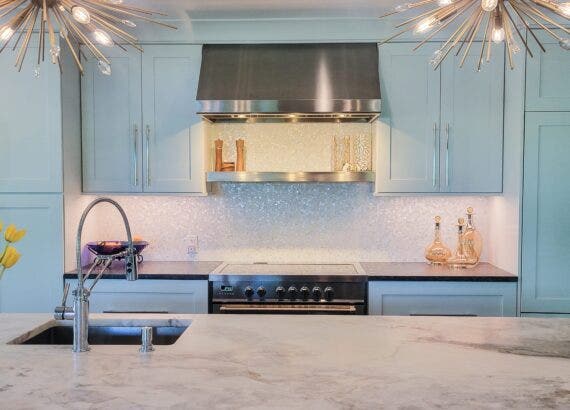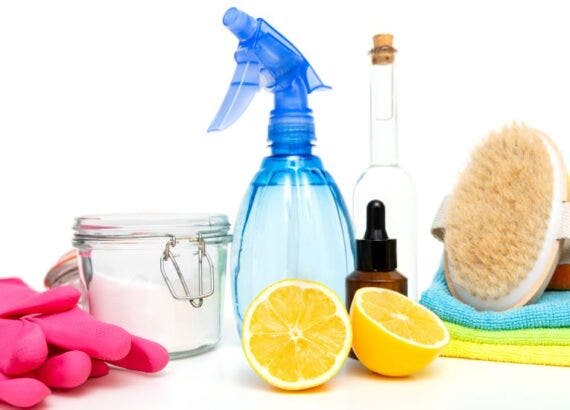What Is Satin Paint?

If you’re looking to redecorate your whole home, nothing makes quite as impact as a fresh coat of paint.
We all know picking the right color is important. Although, picking the right finish is just as important.
One finish that is often overlooked is satin paint.
Among regular do-it-yourselfers, satin paint has become a long-time favorite gloss-level paint.
The main reason for this is that it is simple to apply and dries moderately quickly.
The paint is well regarded within the community as it produces a durable sheen, easy-to-clean, and full coverage paint.
On top of all this, it is a highly versatile paint. From large surfaces to small detailing, such as trimming, this paint can do it all.
With this in mind, this article will be exploring everything you need to know about satin paint and more!
Table of Contents
So, What Is Satin Paint?
Satin is a variety of paint sheens that falls directly between the different exterior or interior paint sheens.
As opposed to eggshell finish paint, satin paint is more glossier; although, when compared to semi-gloss paint, it is flatter.
Moreover, in low light, satin paint won’t generate any reflections which is usually the case with semi-gloss or gloss paint.
However, having said that, in bright light or at certain angles, the shine of satin is more visible.
Early productions of satin paint were marketed as dulled-down types of high-gloss paint.
For instance, one of the primary brands, called Satin-Glor, often advertised their paint as a ‘dull gloss finish’.
Satin Paint Gloss Rating
Essentially, the range of paint glosses falls from flat to gloss. Flat paints contain a more velvety texture and are known to absorb light.
While gloss paints feature a more glass-like appearance and reflect light.
In the paint industry, the level of gloss is measured by pigment volume concentration (PVC).
Essentially, the proportion of pigments found in the paint (color-producing solids) against the binders defines the paint’s PVC.
Therefore, the higher the PVC level, the flatter the paint is considered.
Typically, satin paint’s regarded as a mid-range PVC rating with 30- to 40- percent – meaning that it contains an average quantity of binders.
This is enough to help with cleaning and durability but still falls short enough to produce that reflective, glassy look.
When And Why You Should Use Satin Paint
Where durability and cleanability are important, here, you should use satin paint for your applications.
The beauty of satin paint is that it can be used on a range of surfaces including low-impact surfaces such as window and door trim, windows, door casings, and doors.
For high-impact surfaces, you should opt for high-gloss or semi-gloss paint.
In this regard, satin paints work great in bathrooms, bedrooms, kitchens, hallways, kids’ rooms, furnished basements, living rooms, and offices.
If you want to prevent reflections then avoid painting satin gloss on walls to receive lots of direct sunshine.
While you could use saint paint on the ceilings, this is typically reserved for matte or flat paint.
Benefits Of Using Satin Paint
Multi-Surface Application
When performing large painting projects, constantly switching between paints can be a tiring and tedious task.
Not only does this slow down the overall progress but also drives up costs.
Therefore, having one paint that can be used on multiple different surfaces can be extremely beneficial.
While it is hard to find one paint that can be used for all applications, there are some paints that are better at doing this than others.
For instance, paints that fall between the range of gloss rankings (eggshell and satin) are more applicable for a wider range of uses.
Cleanability
What makes satin one of the more desirable paints is its ability to be cleaned relatively easily – perfect for kitchens and children’s rooms!
Due to the tight pores found in satin paint, anything from food stains, markers, liquid, and dirt are able to be easily removed as opposed to flatter paints.
Since it contains tighter pores, it puts up more of a battle against water.
Therefore, satin is an excellent, moisture-resistant paint that makes for a great choice for walls in both kitchens and bathrooms.
On top of this, you can use satin paint on the ceiling of rooms where mildew and mold are a cause for concern.
Easier Application
Satin paint is one of the easiest paints to apply. While it may not be as simple as flat paint which offers resistance to lap marks and rapid drying times (at 30 minutes or less), satin paint shouldn’t be discounted!
For one, it doesn’t take nearly as long to cure and dry as gloss paint (which can sometimes take 2 to 3 hours, or even longer!).
Additionally, in gloss and semi-gloss paints, lap marks are hard to avoid.
Satin paint, on the other hand, takes approximately one hour to dry when in optimum conditions.
Likewise, when applying satin paint, as long as you roll off of a wet edge or are using a brush, you’re less likely to notice any lap marks.
How Satin Paint Differs From Other Paint Glosses
As previously mentioned, satin paint falls in the middle of eggshell and semi-gloss paints, and on the overall gloss scale; it falls in the center.
This means that satin paint features many different factors including moisture resistance, gloss, and durability.
Slightly Glossier Than Eggshell
When comparing paints, satin could be considered closer to eggshell rather than any other paint gloss.
In fact, these are sometimes used interchangeably.
Final Thoughts
When redecorating your home, one of the first things you consider is the color you’re going to paint the walls.
However, have you ever considered the finish? Depending on your preferences, a satin finish may be exactly what you’re looking for.
Hopefully, this guide has provided you with everything you need to know about satin paint.
Other Articles
- Outdoor Range Hood Dimensions: How Wide It Needs To Be (Pro Tips)
- Range Hood Dimensions: Balancing Functionality and Aesthetics for Your Dream Kitchen
- 4 Types of Range Hoods to Never Buy! (And Why)
- Determining the Ideal CFM for Your Outdoor Range Hood (From the Pros)
- Does an outdoor kitchen need a vent hood? (From Experts)







Comments are closed.